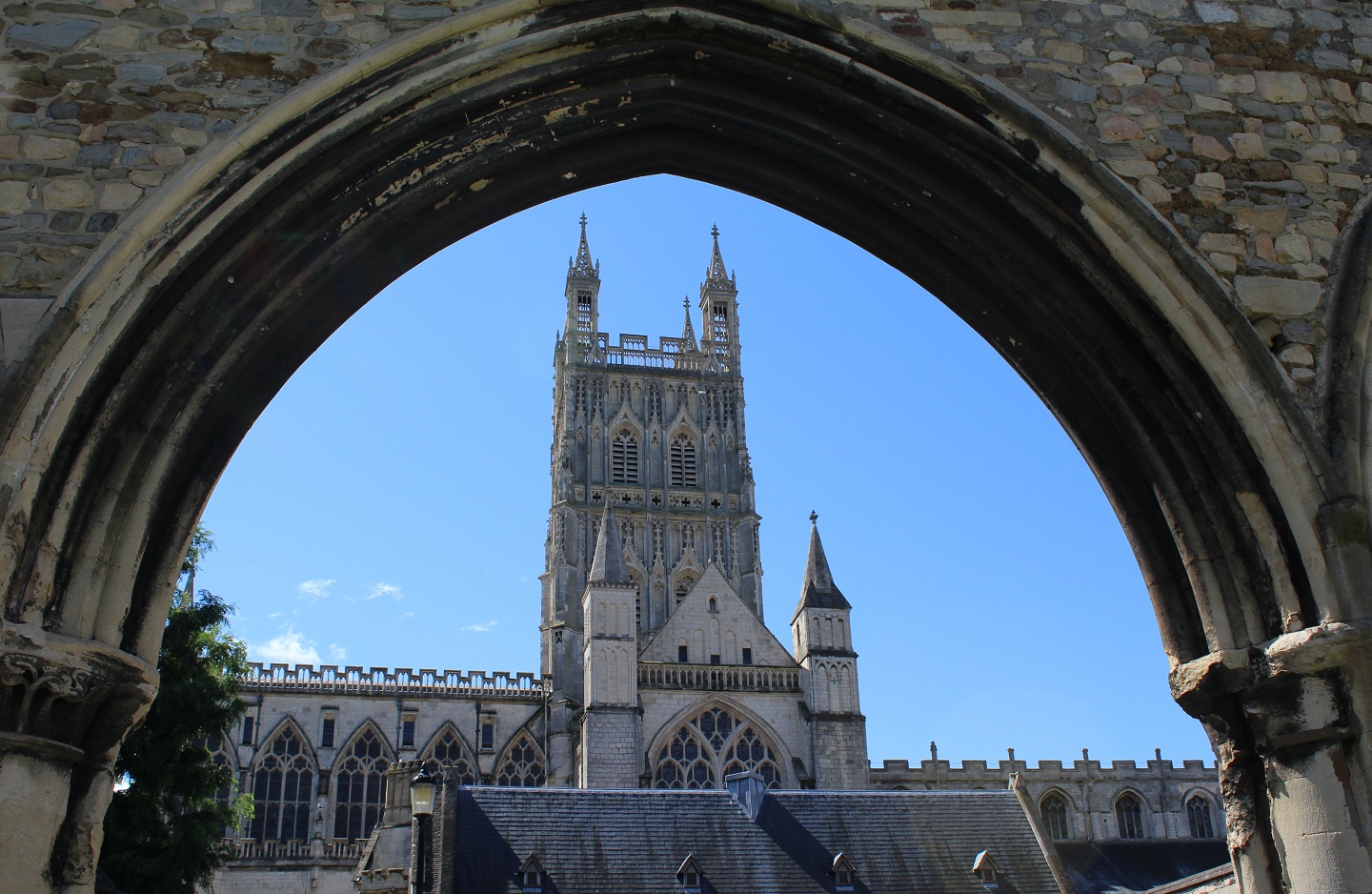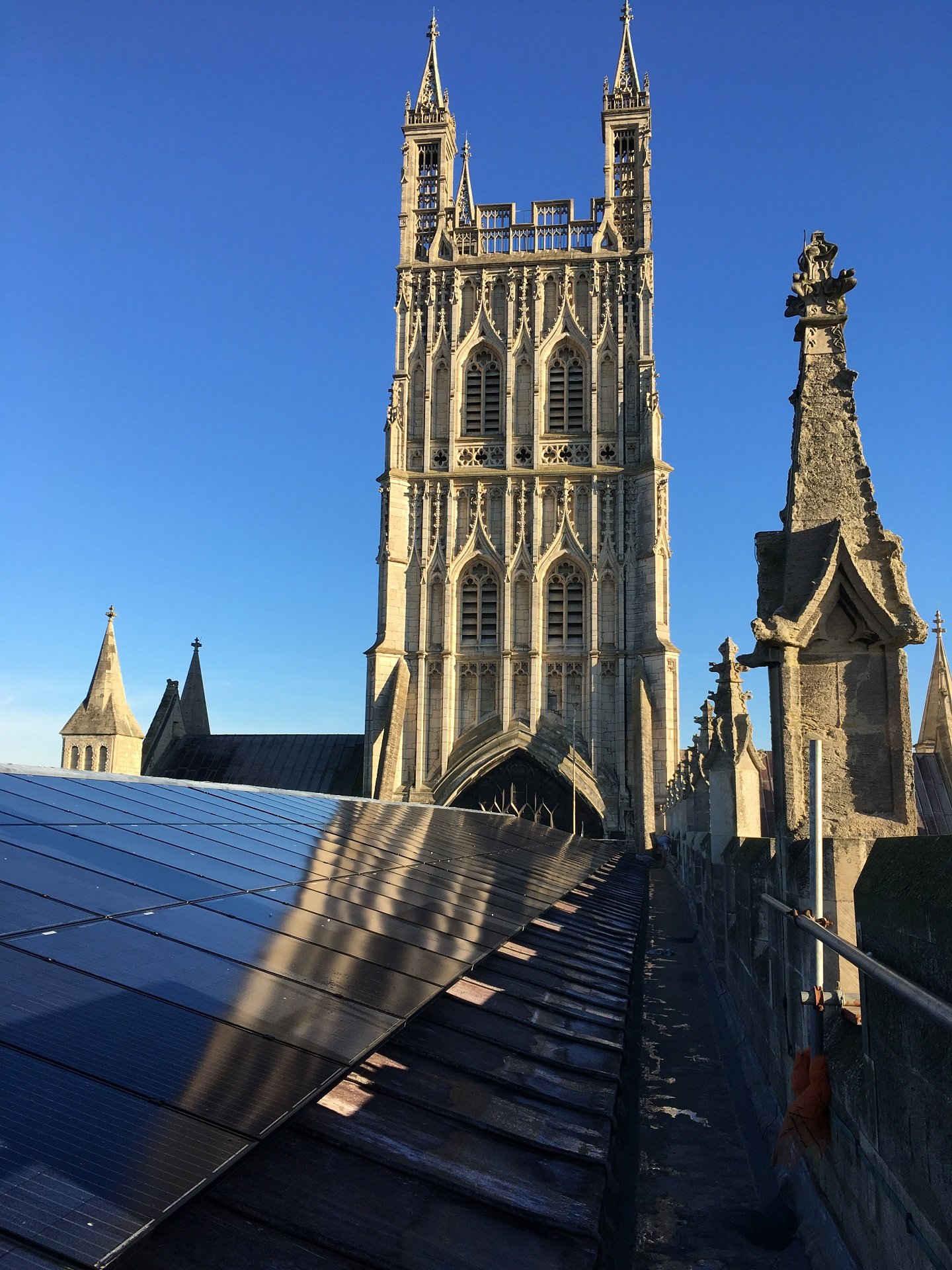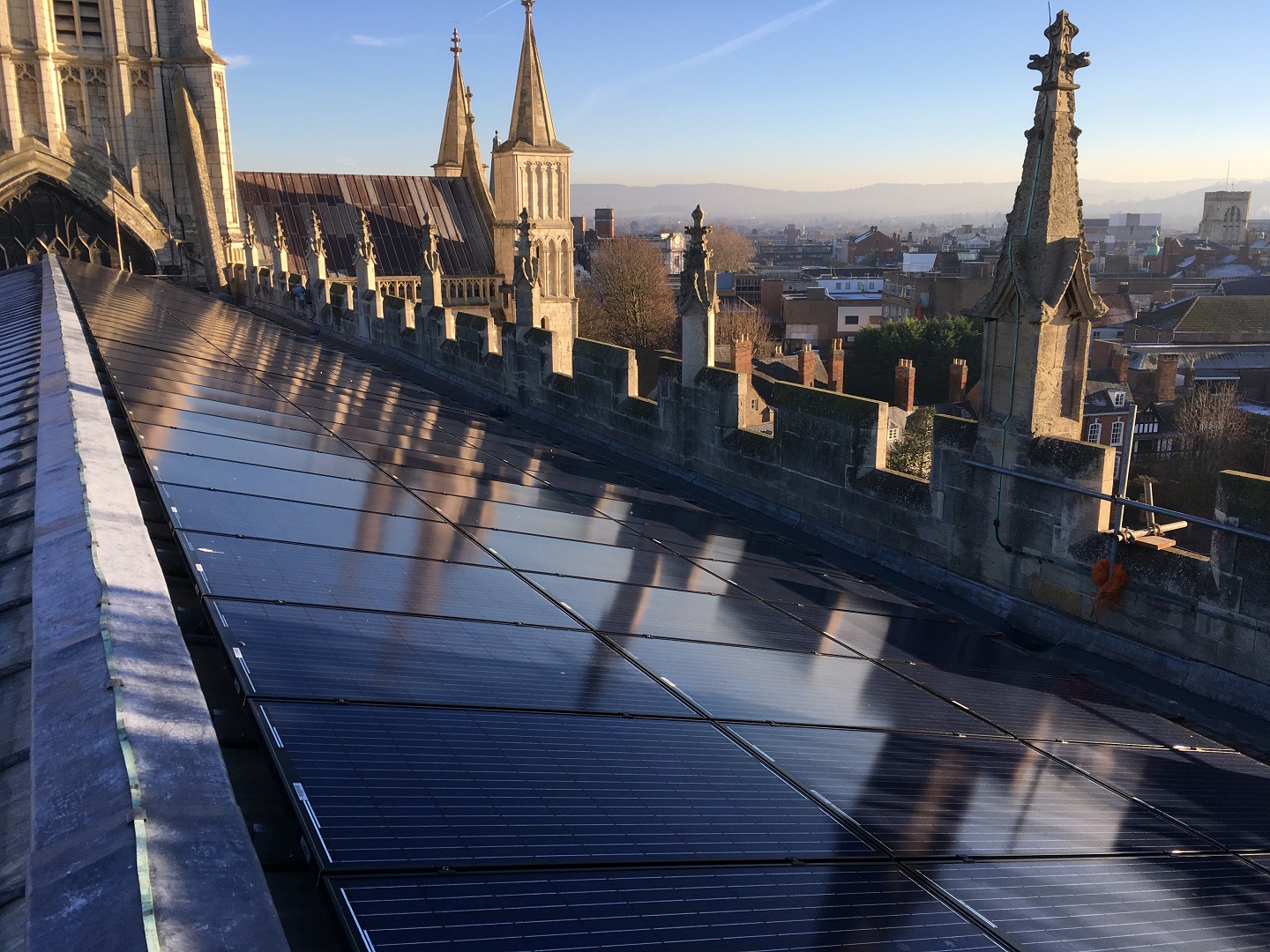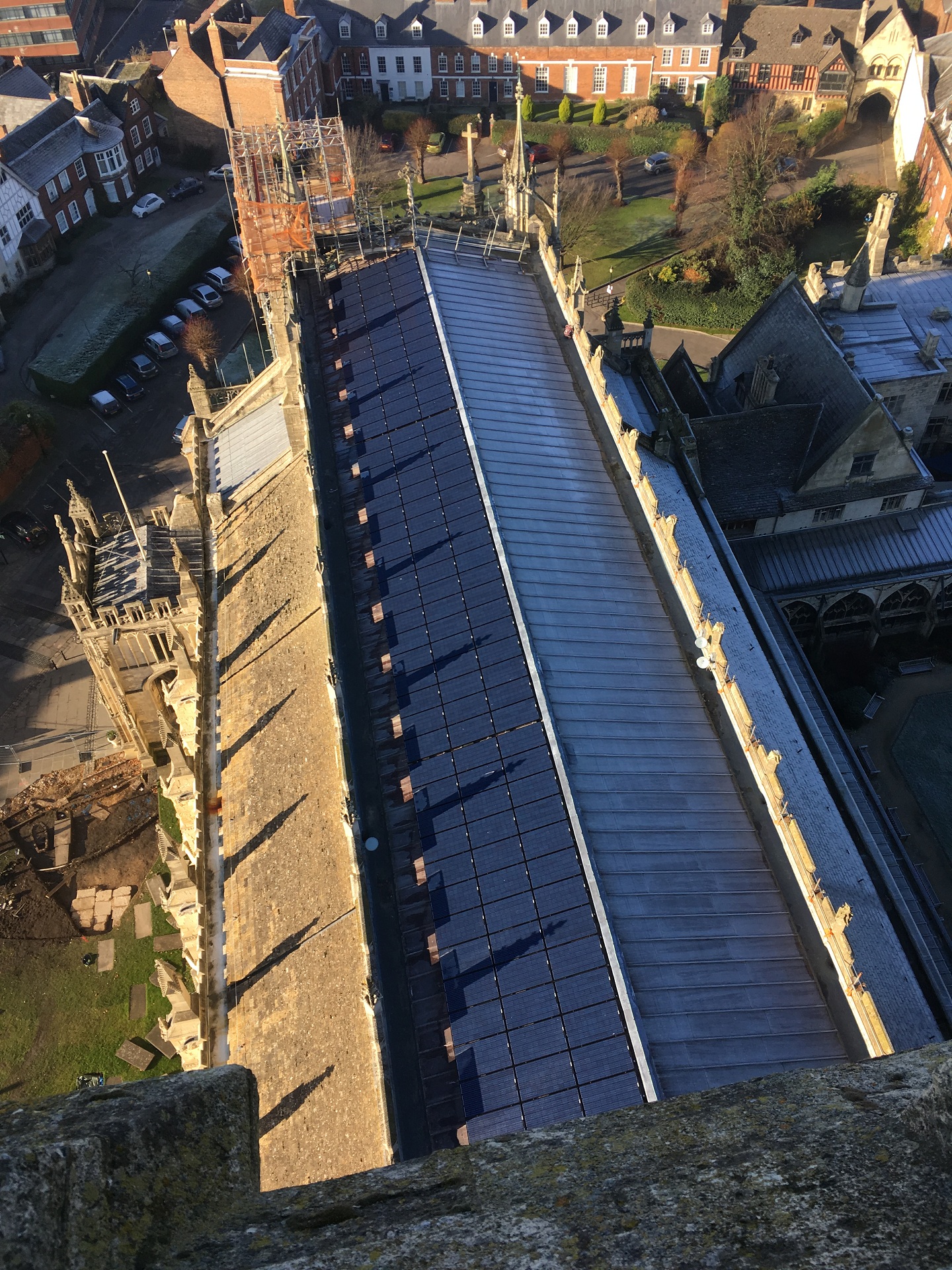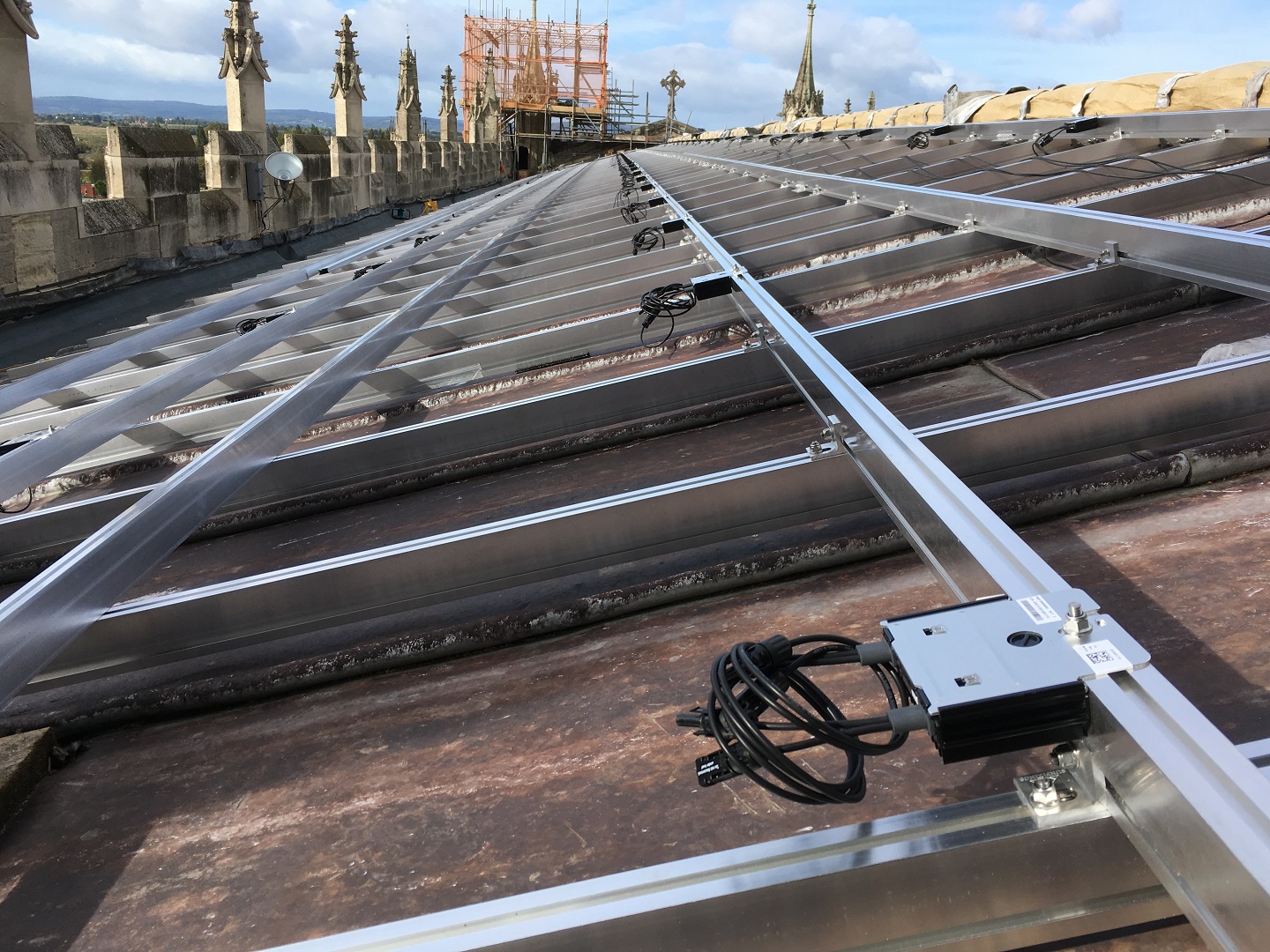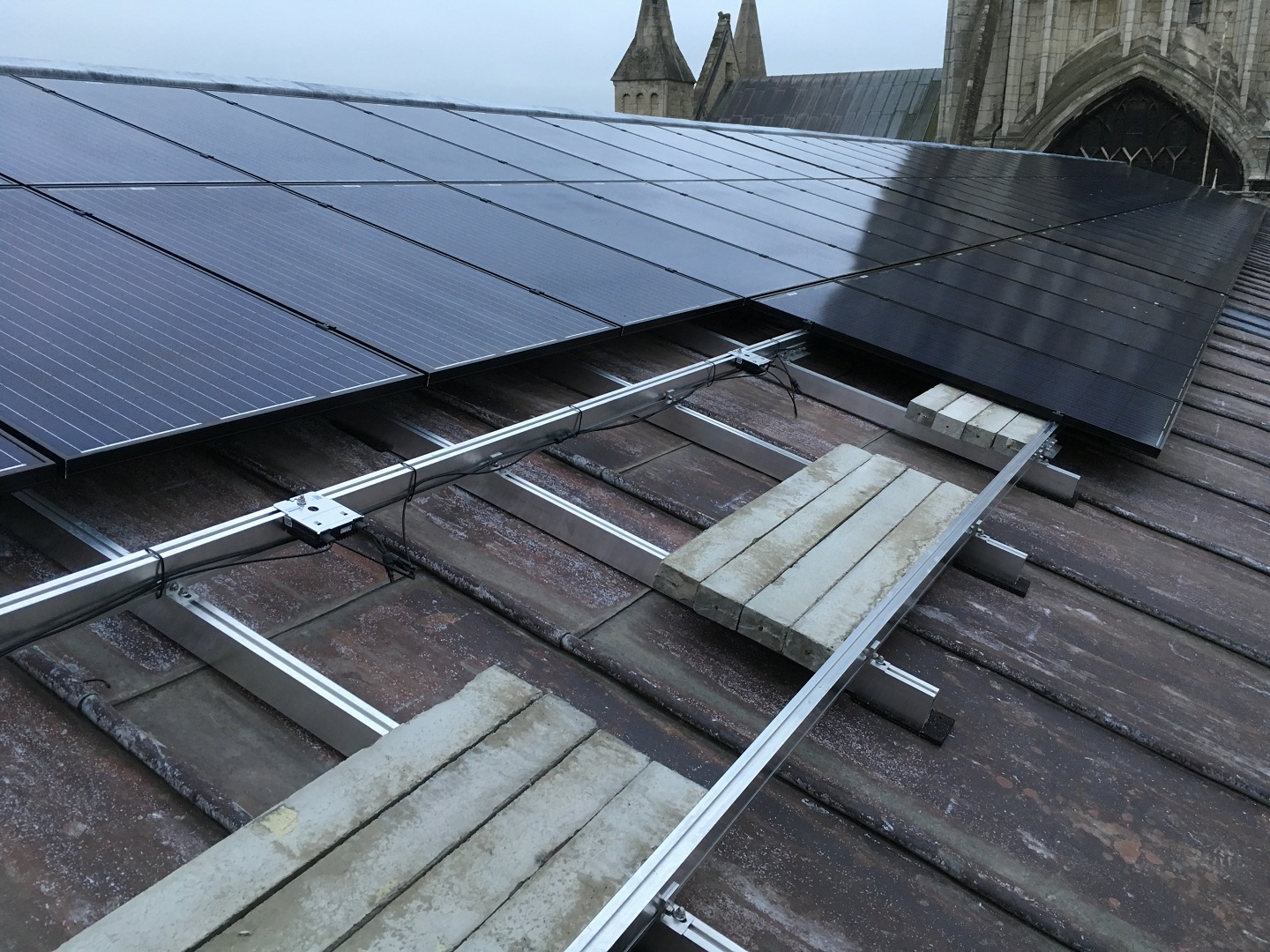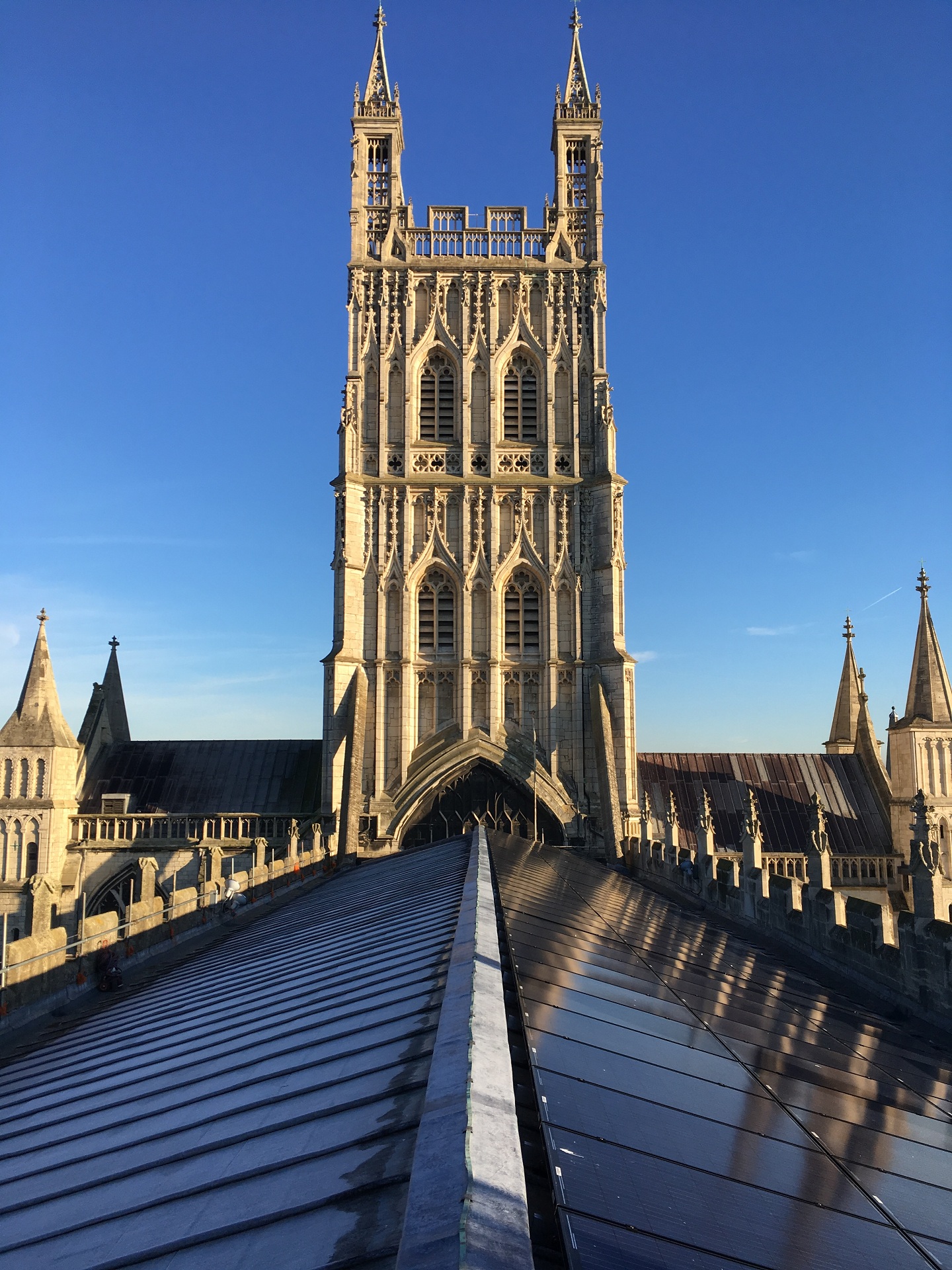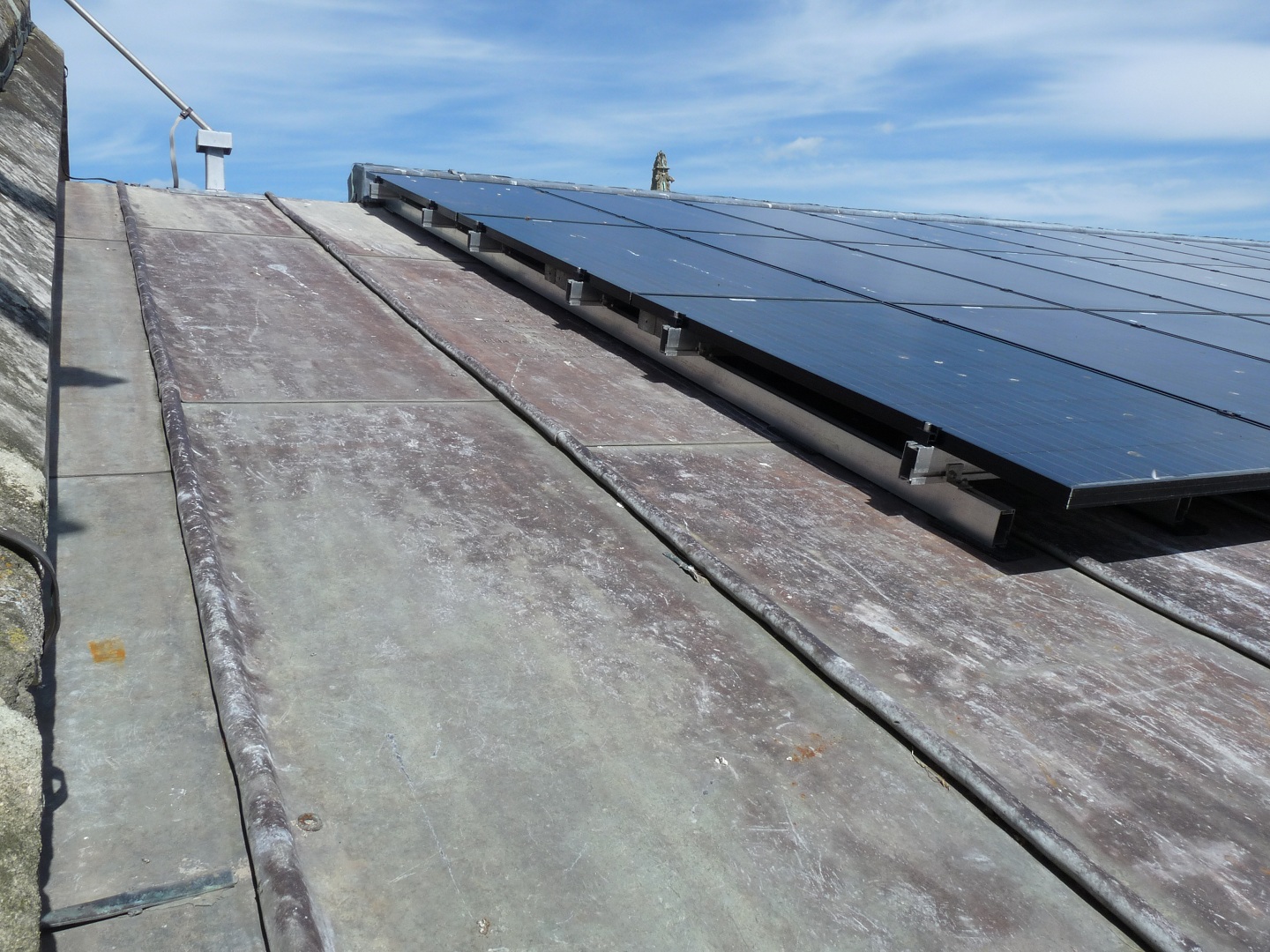Gloucester Cathedral: Project Pilgrim
Gloucester Cathedral is an important spiritual, heritage and civic space, drawing around half a million visitors every year. The project will allow the cathedral to conserve and make the best use of its building and grounds in order to improve sustainability and provide all types of visitor with an improved experience.
By developing the tradition of a warm welcome for all and encouraging visitors to become pilgrims, the project is firmly embedded in the cathedral’s mission to be: “In tune with heaven, in touch with daily life.”
Aims and vision
The project was initially conceived in 2011 and will end in 2019 with capital works due for completion in early 2018 including:
- The new solar panels on the roof (installed and working in late 2016)
- Creation of new entrance and welcome area
- Conservation of the medieval Lady Chapel and stained glass
- Increased physical access and improved interpretation across the site
The project team at Gloucester is enthusiastic about the project and the benefits it will bring for a number of different stakeholders.
Delivery of the capital works whilst remaining open as a place of worship and tourist destination has been a challenge, made more complex with the use of three sets of specialist contractors. However, the team is confident of achieving project outcomes and are beginning to plan for a future second phase.
Funding
The project has cost £5.6 million, including approximately £100,000 for the solar panels and associated lead repair, re-guttering, scaffolding, and so on. The cathedral received nearly £4.5 million in Heritage Lottery Fund (HLF) grant funding and other funds were raised from trusts and private donors.
The cathedral ran a “sponsor a solar panel” scheme, which raised about half the funding for the panels and their installation. The idea for this came from a survey of stakeholders about the project, where a chance question about fundraising for the panels received a hugely positive response.
Without the HLF grant, the cathedral would not have been able to carry out Project Pilgrim as envisaged. The focus for any resource would have been fabric repair, such as the conservation of the Lady Chapel, rather than a more holistic and outward facing project designed to engage with the public, enhance visitor experience and improve sustainability.
The cathedral has a strong working relationship with HLF and from the very start of the project has engaged in a creative dialogue with HLF to learn from their broad experience and develop the best way forward to achieve the aims of both organisations.
Preparation
Three years of preparation work (2011 - 2014) were undertaken before work began to ensure that the cathedral could make the best case for the project and respond to likely challenges.
For example, Cathedral Architect, Antony Feltham-King, carried out extensive work to develop an innovative and light touch fixing method and to gather evidence that the solar panels would not be visible from various sites in and around Gloucester.
The prolonged period of development also allowed for conversations and discussions with a number of key permissions bodies and individuals.
The cathedral used this time to outline its ambitions and concepts and to receive and respond to feedback and concerns before submitting formal permissions requests to the Local Planning Authority, the cathedral’s Fabric Advisory Committee (FAC) and the Cathedrals Fabric Commission for England (CFCE). This process put the cathedral clergy at its centre with support from the Cathedral Architect and other design team members.
Development work
In 2016 150 solar panels were installed on the nave roof of the cathedral. They generate around 25% of the cathedral’s energy usage and contribute to its carbon reduction targets which respond to the Church of England’s Shrinking the Footprint programme.
Antony Feltham-King recognised that Gloucester might be able to install solar panels when he carried out his first quinquennial inspection in 2009. The pitch of the roof, relatively high parapet and fairly modern roofing materials on the nave combined to create an opportunity.
It was the need to rectify a defect at the ridge of the lead roofing, where the metal was beginning to crack, which provided the impetus for the project to go ahead. The new ridge detail is a perfect securing point for the metal frame which, resting on soft pads against the lead, supports the solar panels.
The cathedral received enormous support for the solar panel project: from the initial support of the FAC and Friends of Gloucester Cathedral, to visitors, designers and contractors. Everyone has been enthusiastic about finding the best design and developing innovative solutions to the challenge.
Once the capital works are complete, a comprehensive interpretation scheme for the cathedral will be installed early in 2018, which will allow the cathedral to fully implement its new audience development plan.
Sustainability
Gloucester Cathedral aims to improve its sustainability in a variety of ways, from reducing its carbon footprint to broadening its demographic appeal and developing new income streams.
As well as the solar panels, Gloucester buys green energy for the rest of its needs, and is reviewing options to upgrade its lighting system, conserve heat and reduce energy wasted via draughts. This will help to reduce energy consumption and support the Shrinking the Footprint campaign, which has a carbon reduction target of 80% by 2050.
Gloucester is committed to keeping free entry to the cathedral but is conscious of the need to maximise other appropriate income streams. With the average visitor donating just 40p per pilgrim, the cathedral is trying to encourage further giving and to develop current income generating assets including the café, shop and crypt tours.
Engagement and volunteers
The project team worked to ensure a high level of public engagement, consulting local people and visitors about what they wanted from the cathedral, and sharing information about the project including throughout development and delivery.
Responses to these early surveys confirmed a high level of public support and the project aims to build on and mobilise this. The delivery of actions within the project’s Activity Plan should increase and embed wider community engagement.
As part of this the project team are keen to explore new opportunities to encourage a more diverse volunteer demographic to take on a widening array of opportunities. The HLF grant has funded a new Volunteer Officer post which has given cathedral staff more capacity to refresh its current volunteer programme.
Reflections and lessons learned
Innovation
The project team recognise that unique circumstances has allowed for the addition of solar panels, but want to promote the idea that creative and innovative thinking is possible within the setting of such an important medieval building as a key part of its sustainability.
Management
HLF funding allowed the cathedral to hire a Project Manager, who has coordinated the project and worked with internal team members, consultants and contractors. The works done so far have involved a number of contractors (including the cathedral’s own mason team) to ensure quality specialist delivery in a range of different disciplines. Coordination across these has been time-consuming and future projects may be less complex if shaped for one main contractor.
The cathedral’s commitment to remain open throughout the works has also required detailed management but is something they are committed to repeating if at all possible.
Approach
The project team ensured that their approach was always flexible and remained true to the project’s vision and objectives rather than wedded to individual designs. This has allowed them to take advantage of suggestions for improvement from architects, designers and contractors once work had started as well as responding to some of the archaeological and structural challenges faced in a building of this age.
Gloucester Cathedral Image Gallery
Please click on the gallery images to enlarge.

